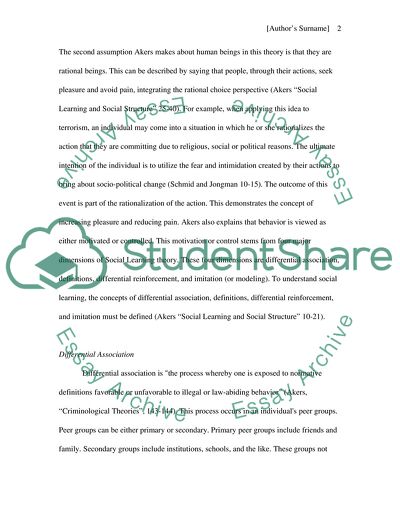Cite this document
(How Does Social Learning Theory of Criminology Best Explain Terrorism Essay Example | Topics and Well Written Essays - 1250 words, n.d.)
How Does Social Learning Theory of Criminology Best Explain Terrorism Essay Example | Topics and Well Written Essays - 1250 words. https://studentshare.org/sociology/1753817-how-does-social-learning-theory-of-criminologly-best-explains-terrorism
How Does Social Learning Theory of Criminology Best Explain Terrorism Essay Example | Topics and Well Written Essays - 1250 words. https://studentshare.org/sociology/1753817-how-does-social-learning-theory-of-criminologly-best-explains-terrorism
(How Does Social Learning Theory of Criminology Best Explain Terrorism Essay Example | Topics and Well Written Essays - 1250 Words)
How Does Social Learning Theory of Criminology Best Explain Terrorism Essay Example | Topics and Well Written Essays - 1250 Words. https://studentshare.org/sociology/1753817-how-does-social-learning-theory-of-criminologly-best-explains-terrorism.
How Does Social Learning Theory of Criminology Best Explain Terrorism Essay Example | Topics and Well Written Essays - 1250 Words. https://studentshare.org/sociology/1753817-how-does-social-learning-theory-of-criminologly-best-explains-terrorism.
“How Does Social Learning Theory of Criminology Best Explain Terrorism Essay Example | Topics and Well Written Essays - 1250 Words”. https://studentshare.org/sociology/1753817-how-does-social-learning-theory-of-criminologly-best-explains-terrorism.


